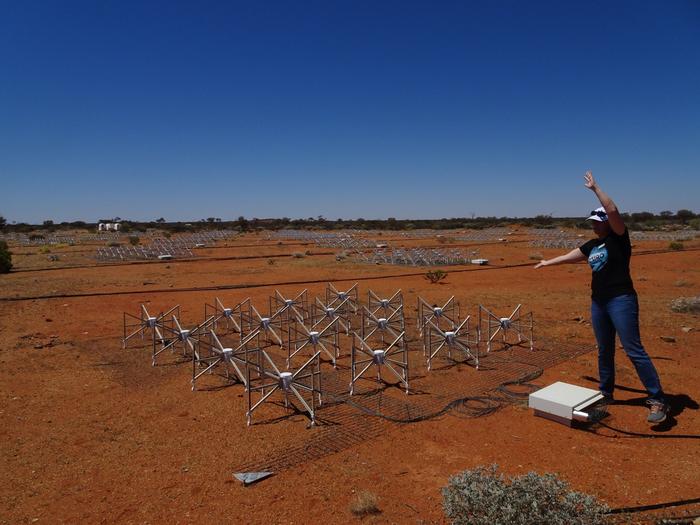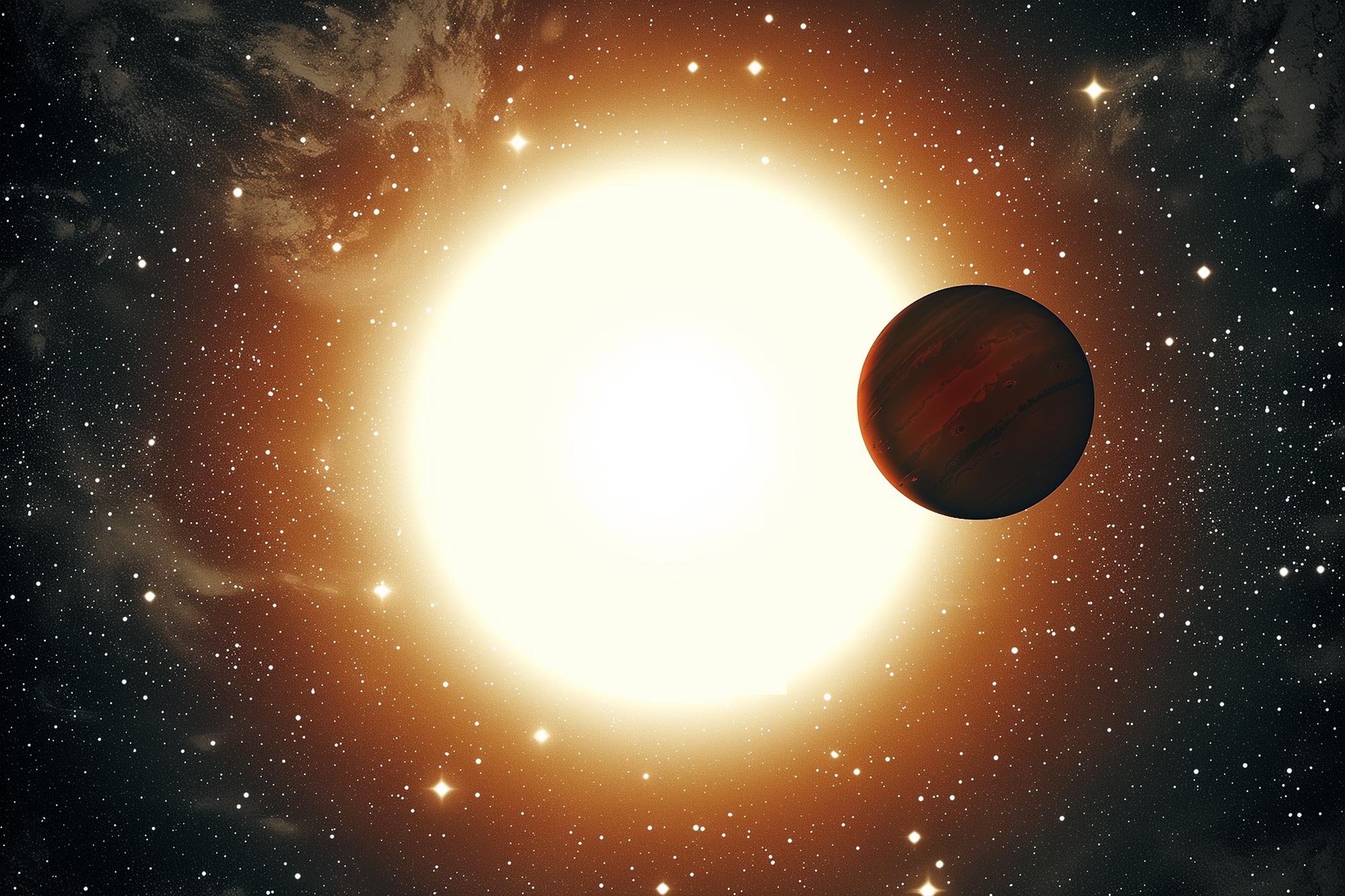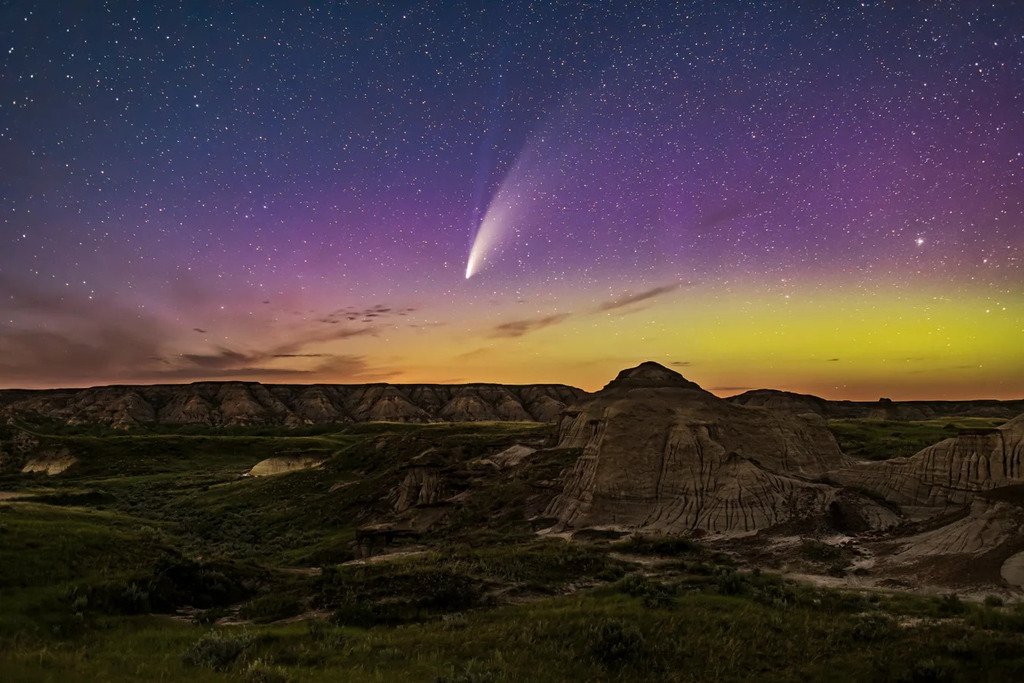
The SETI Institute frequently appears in news stories due to its essential contributions to space science and exploration.
In this month’s roundup, Nathalie Cabrol, director of the Carl Sagan Center at the SETI Institute, launches her new book The Secret Life of the Universe. Discover how astronomers are pioneering the use of AI to facilitate interstellar communication, learn about the exciting potential of the upcoming Comet Tsuchinshan-ATLAS, and don't miss the spectacular celestial events of 2024, including the Perseid meteor shower, the Annular Solar Eclipse, and more!

How the Search for Aliens Is Redefining Life in the Golden Age of Astrobiology
In her new book The Secret Life of the Universe, Nathalie Cabrol, director of the Carl Sagan Center at the SETI Institute, zeroes in on what it means to be “alive”. In her book, Cabrol presents both a comprehensive guide on how life could have evolved across our solar system and emphasizes humanity’s need to restore balance with our planet as we continue to search for other intelligent life in the cosmos.
- Read the full article by Scientific American here: How the Search for Aliens Is Redefining Life in the Golden Age of Astrobiology

SETI Institute Partners with Royal Commission for AlUla to Elevate AlUla Manara Observatory
The SETI Institute recently collaborated with the Royal Commission of AIUIa (RCU) to support the development of the AIUIa Manara Observatory in North West Saudi Arabia. As part of the agreement, the SETI Institute will facilitate installation of a Laser SETI instrument designed to detect potential extraterrestrial signals. This collaboration will enhance the observatory’s telescope technology as it strives to become a premier destination for space research and astro-tourism.
- Read the full article by Eureka Alert here: Royal Commission for AlUla collaborates with SETI Institute to support development of Alula Manara Observatory

SETI Institute Launches Search for Alien Technology in Distant Galaxies
In collaboration with the Berkeley SETI Research Center and the International Centre of Radio Astronomy Research, the SETI Institute has embarked on its first low-frequency search for extraterrestrial technology beyond the Milky Way. This research, led by Dr. Chenoa Tremblay of SETI Institute and Professor Steven Tingay of Curtin University, utilized the Murchison Widefield Array (MWA) in Western Australia to scan approximately 2,800 galaxies and focused on low radio frequencies around 100 MHz. Although no definitive technosignatures were detected, this pioneering collaboration could help inform future searches with even more powerful telescopes.
- Read the full article by Science Blog here: SETI Institute Expands Search for Alien Tech to Distant Galaxies

Meteor Showers Reveal Clues About Early Solar System Comet Formation
An international team of 45 researchers, including Peter Jenniskens, Senior Research Scientist at the SETI Institute, uncovered new insights into comet formation when they studied 47 young meteor showers. Their findings reveal that not all comets crumble the same way when they approach the sun, and that long-period comets from the Oort Cloud and Jupiter-family comets from the Kuiper Belt exhibit distinct fragmentation patterns.
- Read the full article by Space Weekly here: Meteor showers shed light on where comets formed in the early solar system

Amateurs Unveil New Planet: SETI Institute Plays Key Role in Discovery
Utilizing backyard telescopes, two teams of amateur astronomers called UNITE (UNISTELLAR Network Investigating TESS Exoplanets) and Exoplanet Watch, have collaborated with the SETI Institute, to successfully confirm a new exoplanet TIC 393818343 b (TOI 6883 b). Astronomers predict that this new “warm Jupiter” might migrate even closer to its star to become a “hot Jupiter.” Thanks to this incredible collaboration, we are one step closer to understanding the population of planets outside of our solar system.
- Read full article by ScitechDaily here: Amateurs Unveil Jupiter’s Cousin: A New Planet Discovered With Backyard Telescopes

A Potentially Spectacular Comet Will Fly by Earth Next Year
Skywatchers, get ready! Comet Tsuchinshan-ATLAS (Comet C/2023 A3) is on track to zip close to Earth in the fall 2024. Discovered earlier this year as a faint speck, its predicted brightness has stirred excitement, with some forecasts suggesting it could outshine Comet NEOWISE from 2020. Ariel Graykowski, a planetary astronomer at the SETI Institute, emphasizes the comet's potential, noting, “Pretty much right away, it started a buzz in the comet community because predictions were putting it all over the place in terms of how bright it could get.” Graykowski, alongside the Unistellar network, will monitor the comet's approach daily. Stay tuned!
- Read full article by Scientific American here: A Potentially Spectacular Comet Will Fly by Earth Next Year

Revolutionizing Interstellar Communication: SETI Institute’s Innovative AI Proposal
SETI Institute astronomer Franck Marchis and NASA researcher Ignacio G. Lopez-Francois are spearheading a groundbreaking project, A Message to Extraterrestrial Intelligence, which will use AI for interstellar communication by sending an advanced AI language model into space. Marchis highlights the potential impact, stating, “By sending well-trained, large-scale language models into space, we will open the door to an unprecedented exchange with extraterrestrial intelligence.” If successful, scientists believe this would allow us to share our cultural and scientific knowledge and ultimately make it easier for aliens to communicate with earthlings.
- Read full article by Archyworldys here: Scientists figured out how to start a conversation with aliens: A new idea from specialists





